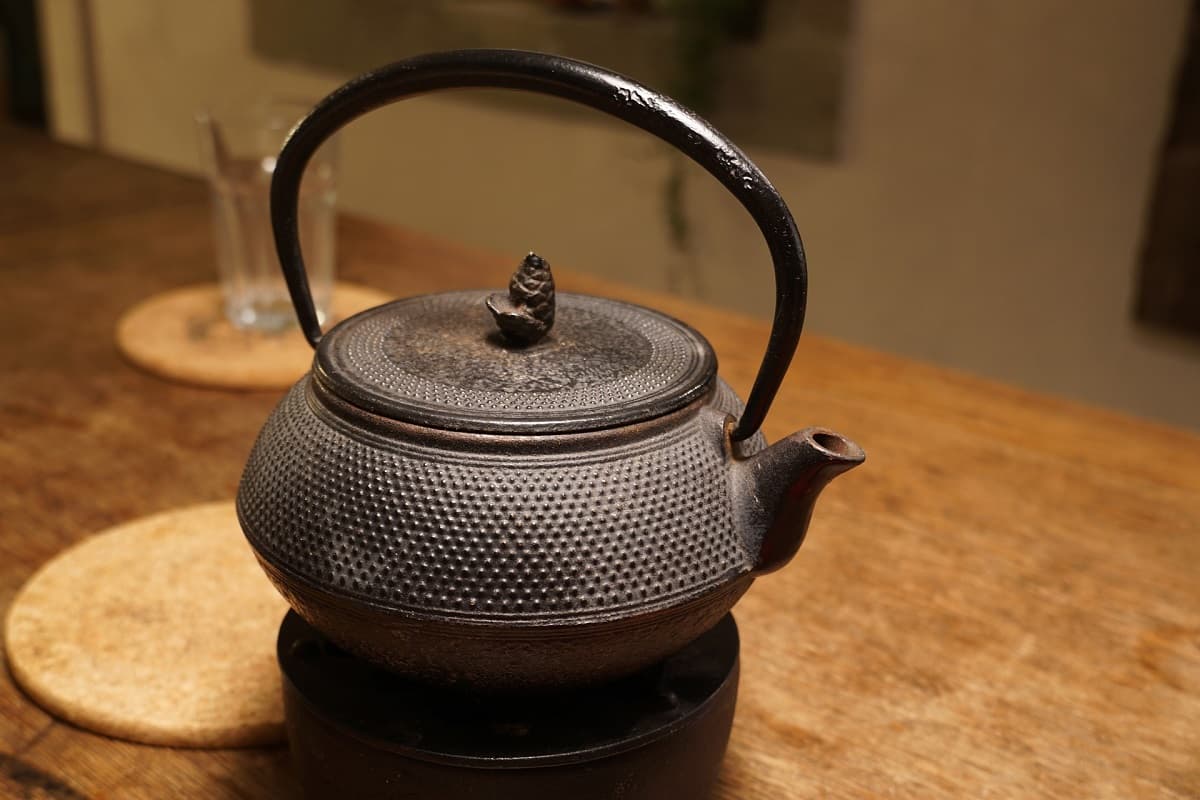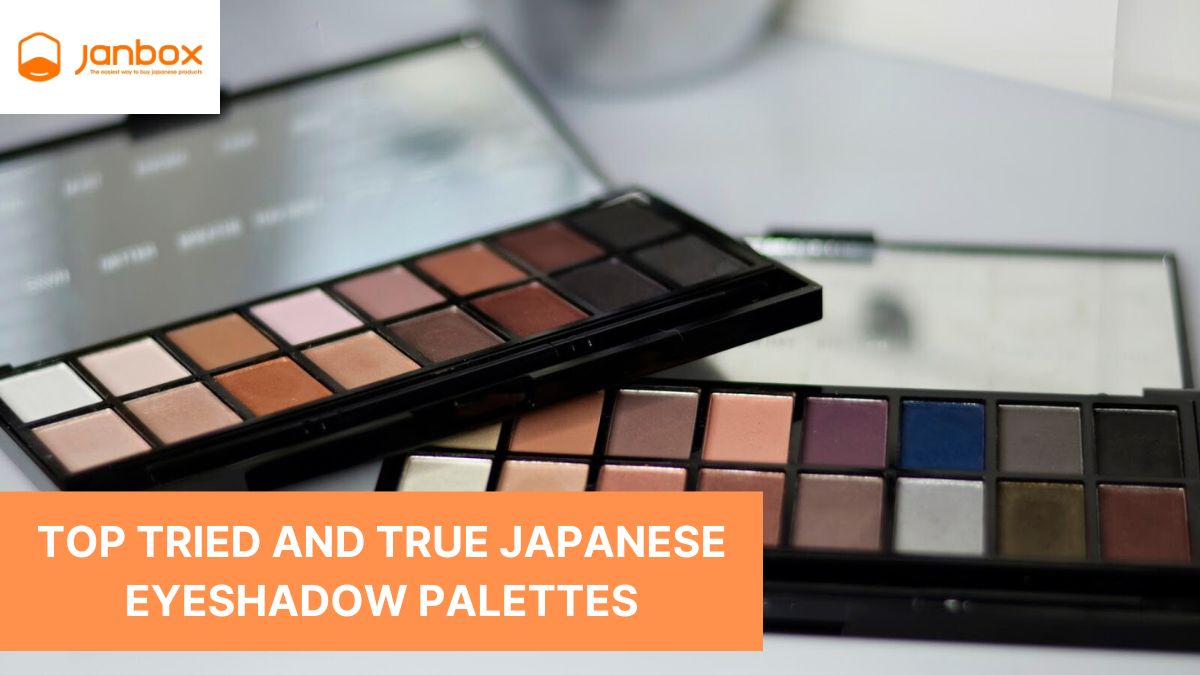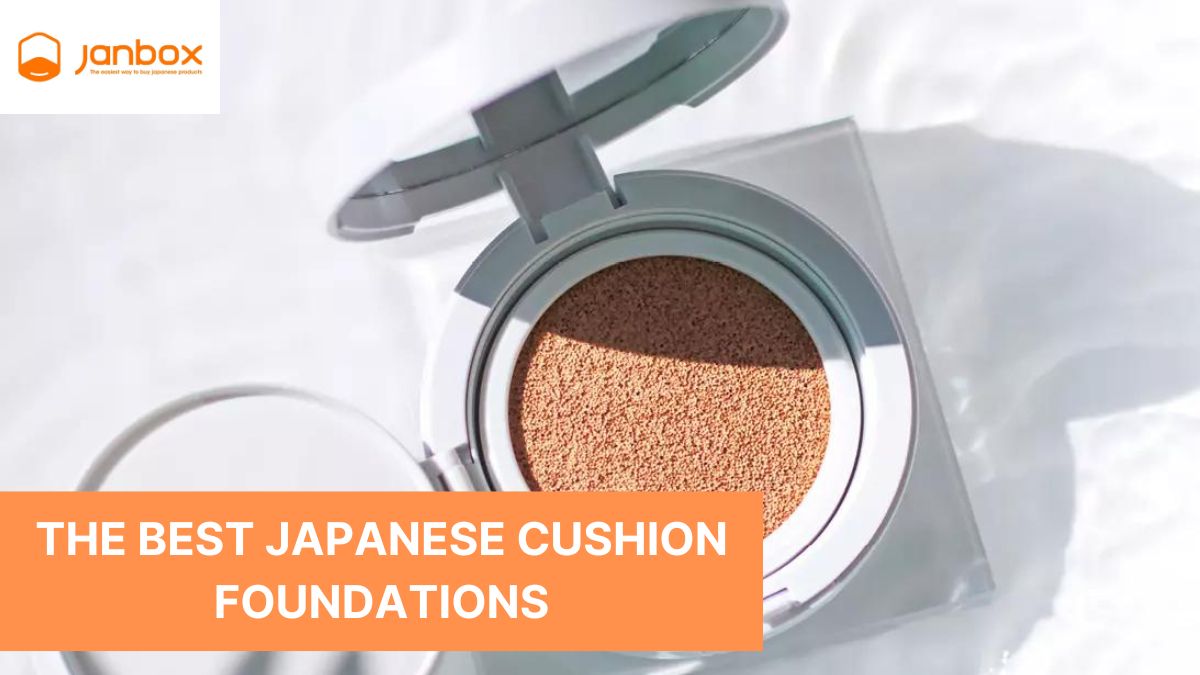You already know how amazing Japanese tea is if you’ve ever had it. However, why is it so challenging to replicate that flavor after you get home? You also need to consider the additional tools you’re employing in addition to the tea leaves. The Japanese Tetsubin or cast-iron kettle may be the most important element, but bowls, spoons, and even the environment are all significant elements.
These tea kettles are available in a wide variety of sizes and shapes; some are built simply, while others are more intricate. But when expertly made by hand, it can be cherished and handed down for a long time. These unusual items have their roots in the distinctive heritage of Japanese culture. Fortunately, we’re here to explain the background of Japanese tetsubin, or Japanese cast iron tea kettles to you! Let’s take a look!
I. What is a Tetsubin?
The Japanese tetsubin or cast iron kettle is a hand-crafted iron utensil, traditionally used in the Japanese tea ceremony to heat the water. Of course, a kettle that is used for heating water for tea isn’t exactly newsworthy, but there is something pretty special about the tetsubin.

Tetsubins are said to have gained in popularity after the time of warring nations in Japan, however, the cast iron kettle’s exact origin is unknown. Weapons manufacturers stopped commuting and settled down following Tokugawa’s unification of Japan in 1603. They started to supply the growing demand for more domestically fitted iron goods in the new stable country as they looked for new markets. Tetsubin originated in the Tohoku area, which was populated by many iron-rich people and controlled by the tea-loving King Nanbu. Even now, the highest-quality iron products in Japan are still produced in the Tohoku prefectures of Morioka, Mizusawa, and Yamagata.
Another idea proposes that the introduction of Chinese sencha whole leaf tea, which was regarded as less formal and so more generally ingested than powdered matcha, led to the popularity of the Japanese cast iron kettle. Regardless of where it came from, the tetsubin quickly established itself as a fundamental component of the Japanese tea culture. Today, cast iron kettle enthusiasts can’t live without one.
II. How to use a Tetsubin teapot?
Japanese Tetsubin can be used to make tea with loose tea leaves or tea bags. Look for a cast iron teapot with a removable tea infuser if you intend to brew loose-leaf teas. A stainless steel infuser basket sits right on the rim of most cast iron kettles.

Over time, even genuine tetsubin and enamel-lined variants develop a patina. This residue allows flavors to develop further, resulting in richer-tasting tea. To retain the flavor of tea, boil only one type of tea in your cast iron teapot, such as green or oolong.
Follow these instructions when using a Japanese tetsubin cast iron teapot.
- Step 1: Preheat
On the stove, put a pan of water to boil. Use boiling water to rinse the Japanese Tetsubin a couple of times.
- Step 2: Add tea leaves
For every 8 ounces of water, measure out the necessary number of tea leaves. The quantity will change based on the dimensions of your tea kettle and tea infuser. The leaves won’t fully expand and impart flavor if the infuser is overstuffed, so avoid doing so.
- Step 3: Heat the water and steep
You can use a kettle and a charcoal fire to make traditional Japanese tea.
Use your kitchen’s burner for easier brewing. You can boil water in a different container and then pour it into the cast iron kettle. If the kettle is not enameled, you can also just heat the water in it on the burner.
For the particular sort of tea you are brewing, make sure to heat the water to the proper temperature. Black tea should be made between 200° and 212°F whereas green tea should be brewed with hot water between 150° and 180°F. Steep the tea as directed by the manufacturer.
- Step 4: Enjoy!
Now it’s time to enjoy a cup of tea and chill!
III. How is a Japanese Tetsubin Made?
Cast iron kettles, also known as Japanese Tetsubin and teapots, are made by pouring molten iron into clay or sand molds. Clay molds are commonly used in the manufacture of high-quality handcrafted tetsubin. The mold is only used once for high-end Japanese cast iron kettles. In this scenario, the stamping process is done by hand on each kettle. Sand molds are commonly used for large production, particularly for export. Metal dry molds are sometimes used to make Yamagata tetsubin.

The tetsubin’s pattern is stamped after it has been formed. Three major conventional patterns exist. The arare dotted pattern is arguably the most well-known. The sharpness of arare is determined by the iron caster’s skill and the number of times the same mold is reused.
In Japanese, arare denotes hail or hailstones. There are different sizes of dots; the largest design is called oni-arare, which means “ogre.” Hada is another design that has a rough surface with an irregular texture. The final traditional motif is metaphorical in nature. It could be of birds, flowers, horses, landscapes, or vegetation.
>>Read more: The difference between Hojicha vs Matcha.
IV. How to Take Care of Your Japanese Tetsubin?
Japanese Tetsubins are praised for their durability. A tetsubin is something you purchase for life. It may even be something you want to include in your will so that future generations can enjoy it. This is due to the fact that a tetsubin is essentially just a finely wrought piece of iron. It is also susceptible to corrosion for the same reason. Rust is perfectly safe for human health, but you can prevent a buildup of the red substance by draining any extra water after use and leaving the top off so that moisture may escape.
If you do unintentionally leave water in your Japanese Tetsubin overnight, you can take advantage of the tea’s antioxidant properties by adding some green tea leaves to the kettle, bringing it to a boil, and letting it steep for a few hours. Although the majority of experts strongly caution against using physical force to remove rust from the interior of your kettle, you can gently brush it with half of a potato if the rust truly starts to irritate you.
You can heat the Japanese Tetsubin and use a towel dipped in tea to gently rub the outside of the tetsubin if rust starts to form. Additionally, since doing so will put stress on the metal, it’s crucial to avoid adding cold water to a hot tetsubin or heating one that is already empty. Traditionally, tetsubin is heated over charcoal fires, but a gas or electric stove will also work. However, if you’re using an induction heater, be sure to heat the kettle gently because the induction heater’s concentrated heat might also damage the iron (be sure your hot plate can withstand the tetsubin’s rough cast iron!).
V. What is the difference between Tetsukyusu and Tetsubin?
The most popular Japanese teapot outside of Japan is the tetsukyusu (iron teapot), a cast iron teapot that externally resembles a tetsubin.
To make it more helpful for making tea, the tetsukyusu’s interior is enamel-glazed, and it frequently comes with a removable tea strainer. Tetsukyusu cannot be used for water heating since doing so would result in the enamel covering inside falling apart irreparably.

A tetsubin should not be mistaken with a tetsukyusu, despite the fact that these terms are now frequently used interchangeably. The latter is exclusively employed to make tea; it is not employed to heat water. Tetsubins are required to boil water, but not to make tea.
Look inside your cast-iron teapot to see if it has an enamel glaze and a strainer to determine if it is a tetsukyusu.
Cast iron tetsukyusu became widely available in foreign and internet markets during the 20th and 21st centuries. The majority of them are produced by factories in Japan, and occasionally even in China, for incredibly low prices. Be cautious and emphasize excellence in workmanship!
VI. Where to Buy Japanese Tetsubin?
If our discussion on Japanese cast ironware piqued your interest, feel free to browse the Janbox collection of Japanese teapots and cast iron kettles.

Janbox is an online store that links people all over the world with Japan and its products. Think of Jandbox as your own personal shopper in the Land of the Rising Sun as we act as a devoted conduit between you and Japan!
Rakuten, Mercari, Yahoo! Japan Auctions, and a number of other well-known Japanese online shopping portals are among those that we have integrated. It follows that you can purchase anything on the Janbox website, with the obvious exception of Japanese Tetsubin. We have several lovely Tokoname clay pots, cast iron teapots from Yamagata, a few charming tetsubin, and many other items in store. Therefore, why are you still waiting? Get your preferred Japanese Tetsubin by visiting the Janbox website.
Conclusion
Everything starts somewhere, and the process of making tea begins with a boiling kettle. Japanese Tetsubin have been around for thousands of years, and they’re still one of the top-choice tools of most tea connoisseurs, who prefer the fresher taste of water boiled in cast iron. If you are among those, go to Janbox and find one for yourself.







